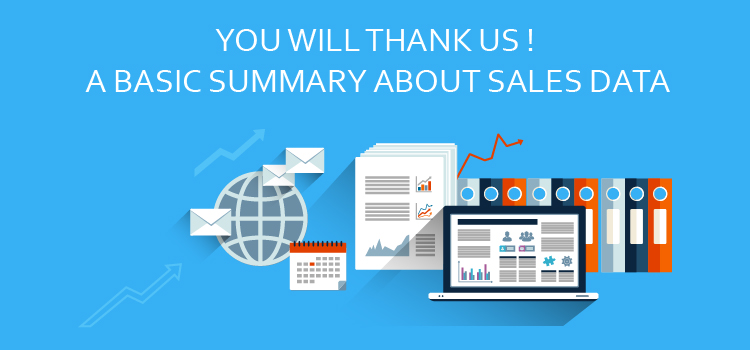10,000 leads in 10 minutes.
Every sales professional’s ultimate dream.
While it must have been a far-fetched fantasy to the yesteryear sales execs, it is a very achievable goal for today’s marketer, thanks to web data scraping.

We live in that period of time when almost all businesses, both online and otherwise, are using an analytics tool to help track their traffic and ROI on marketing investments. Analytics data can also help you to understand what marketing channel is leading to the most conversions on your website.
Sales Intelligence

By definition, Sales Intelligence (SI) is a collection of technologies and processes for collecting and analyzing information to help a company increase the likelihood of sales. Data is collected about sales prospects, competition, products from all over the web, news, and social media sources.
A cult classic thumb rule when it comes to sales data is this: Identify a list of customers who are ready to buy your services today and with just one call or email. However, this is very idealistic and is not achievable that easily in the real world.
But Wait! There’s A Way.
We want to present you with a new approach to lead generation. Here’s the secret ingredient that makes it bulletproof – it is based on web data. This approach was developed by a special team at Scrapeworks, after an in-depth study on some of our earliest users.
It is both ingenious and simple. It splits the entire process into two wings:
- Collect Inbound Sales Data
- Collect Outbound Sales Data
Then, we integrate the two to come up with a package that is rich enough for you to churn out thousands of quality lead generation to work with.
Excuse Me Miss, Come Again?
Right, let’s start with the basics.
Lead generation represents the first stage of the sales process.
In its simplest form, a lead is any person or entity that has an interest and authority to purchase your product or service.
Or in other words: someone you can sell to.
Which brings us to another question. Where do leads come from?
Well, the most traditional way to lead generation is by buying databases of telephone numbers, email addresses or mailing addresses. As you can imagine, these lists are immense, which gives you a high quantity of leads, but the quality is notoriously very poor.
In order to sort out and understand the databases, they are usually split into two – Inbound sales data and Outbound sales data. Your Sales Data can help you nail down your leads, and let’s look at these two sections of sales data in a bit more detail.
Inbound Sales – The inbound sales originate from the several inbound campaigns that an organization may undertake such as content marketing, social media campaigns, AdWords, webinars, etc. It may come through email, website, phone calls, social media, fax or even postal mails.
Outbound Sales – The process of sales reps making calls and sending emails to potential customers so that we can generate interest and end up selling a company’s products or services.
You see, the data about a potential customer is always stored someplace in your organization. It could be your physical binders, your thumb drives, your hard disks, computers or even on the cloud. Further still, your company has a lot to extract from the unimaginable large amounts of customer data that is available on the web in an unstructured format.
While scraping sales data – the initial issues anybody would face right away are that these channels all have their own data sources, formats, and data quality issues.
Inbound and Outbound Sales Data
With the ability to research anything right at their fingertips, today’s buyers are empowered with information, which means that being that stereotypical pushy salesman image wouldn’t work anymore. Your sales process needs to align with the knowledge your buyers are already bringing to the table.
Turns out, all the talk about inbound methods has led up to the discovery that a good quality lead and trying to get a hold of them via campaigns isn’t enough anymore. We hope to dispel that half-myth today.
Outbound sales data may come via cold email and cold calling as well!
To begin with, you need to know where all your sales data comes from.
Website Data
The data that comes from your website is usually structured, thanks to the various analytics tools on the internet. A typical data from your website would probably come in premade data elements such as name, email, telephone, company name, etc., and web forms – a catch-all field that includes your comments, notes or details.
Email Data
Emails have no structure at all. Still, you can use it to supplement a structured database so that you can end up with good sales lead generation, a better Customer Relationship Management strategy, and improve your backend processes overall – just so that you can come up with a prettier UI.
Phone Data
For most companies that are not technically sound, this data doesn’t exist. If you are serious about getting thousands of leads, we strongly recommend investing in a good Voice Over Internet Protocol (VOIP) based smart technology. They will help you get some metadata about the call or can generate transcripts of a call.
Social Media Data
Social Media data is like a pot of gold buried beneath snakes. The catch here is that you may end up in hot water if you don’t concoct your social media presence with great sensitivity and delicacy. But when you do, it has a lot of potential and is a highly evolving source of data. This data can be tied to traditional channels and we can leverage it beyond just driving traffic to their websites and product marketing.
Postal Mail Data
Again, much like Phone Data, a company needs to be equipped with the right tools to make full use of this data. It has the potential to be somewhat structured if there is an OCR technology in place. However, it’s also very time-sensitive, and you may end up with errors if your postman delivers your mail late, or if it’s been tampered with.
Scrapeworks’ Role

Our services help with all aspects of the Sales Intelligence process in a support, augmentation and verification capability. We can help collect data about companies, markets, industries, geographies, trends, weather, eCommerce, health, governments and thousands of other kinds of data.
In fact, we can collect, match and correlate disparate sources of data and give you clean usable data.
Our team is waiting to help you with sales intelligence. Get in touch with us!







